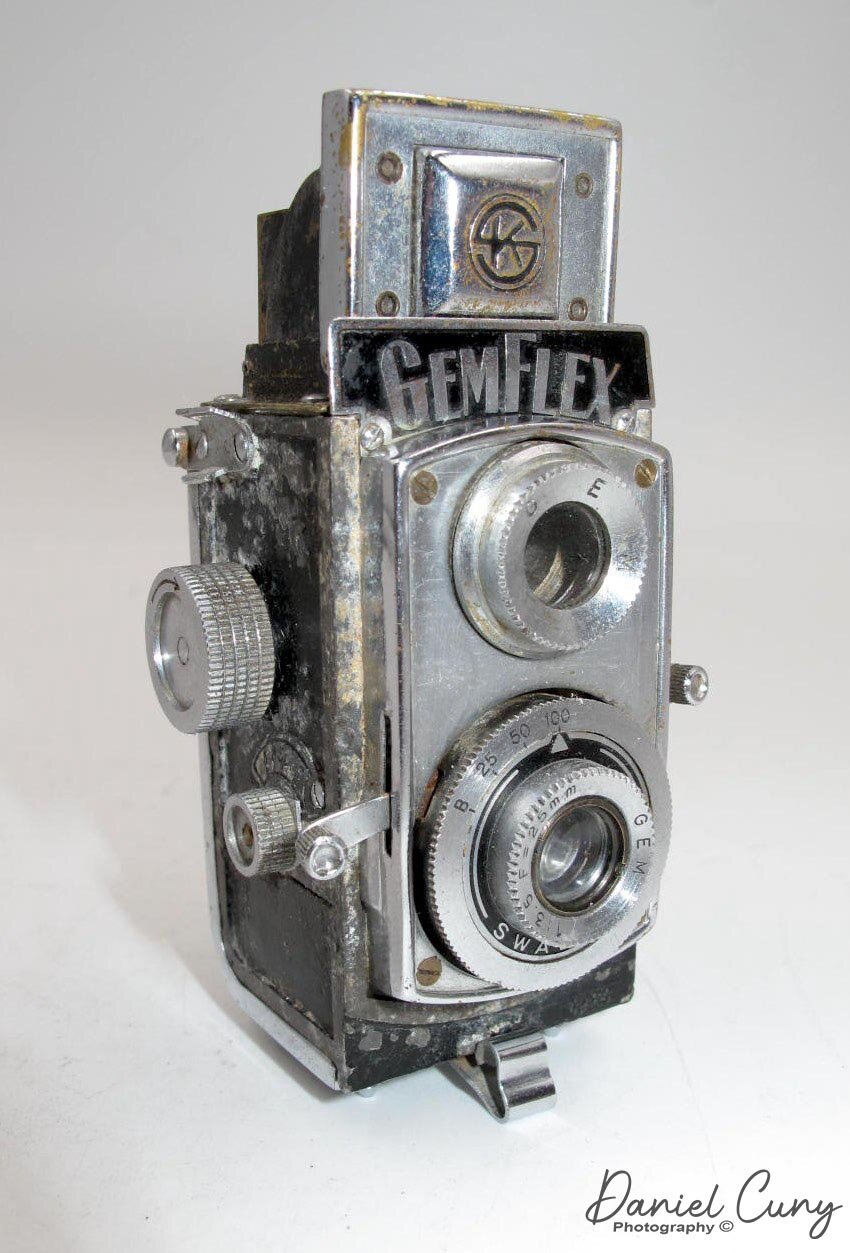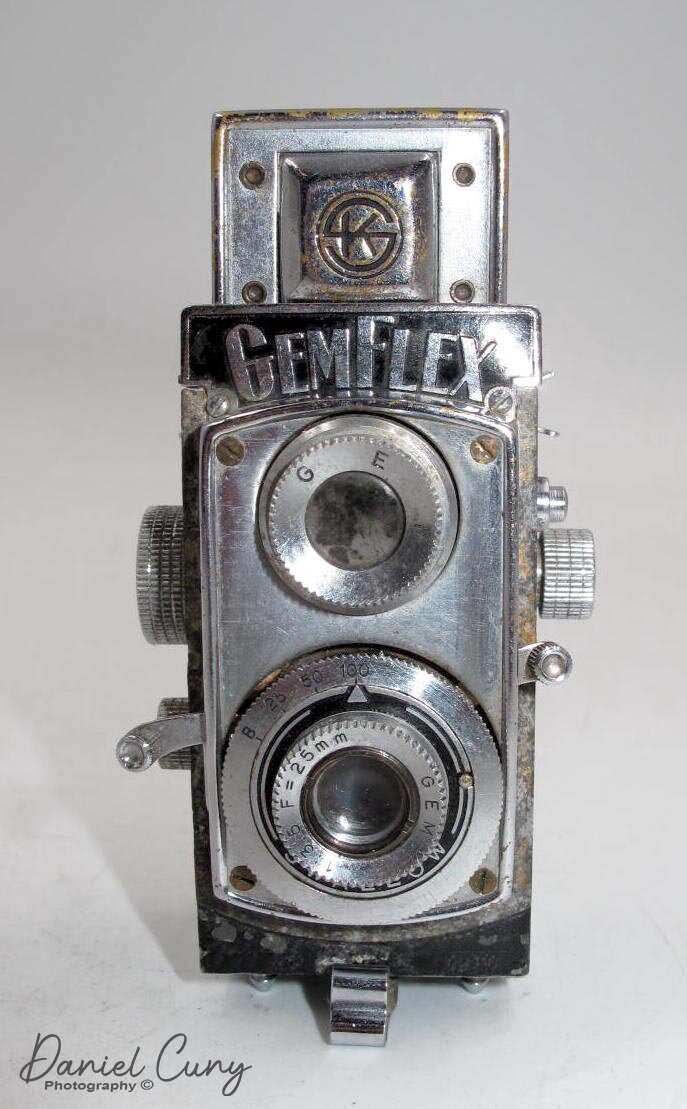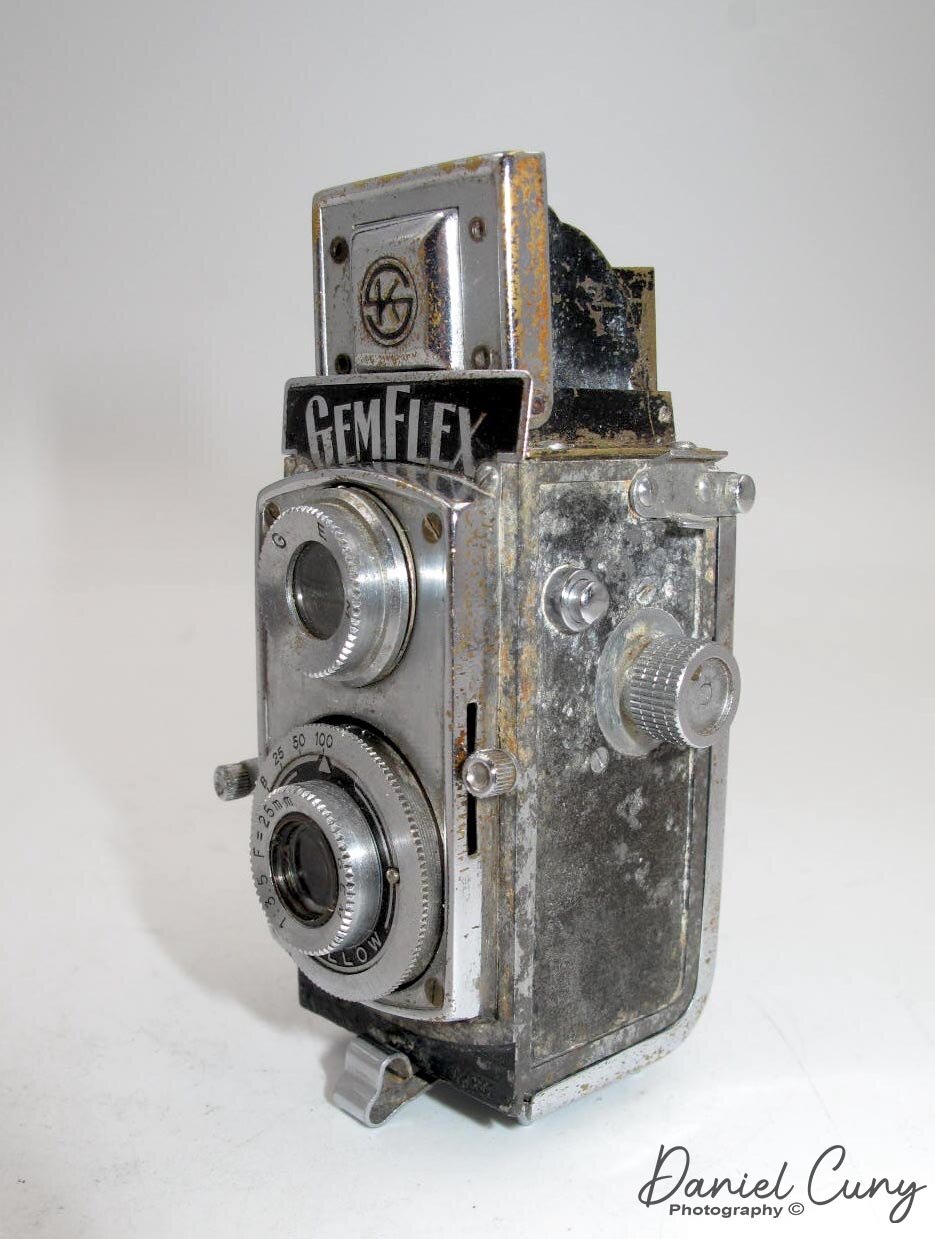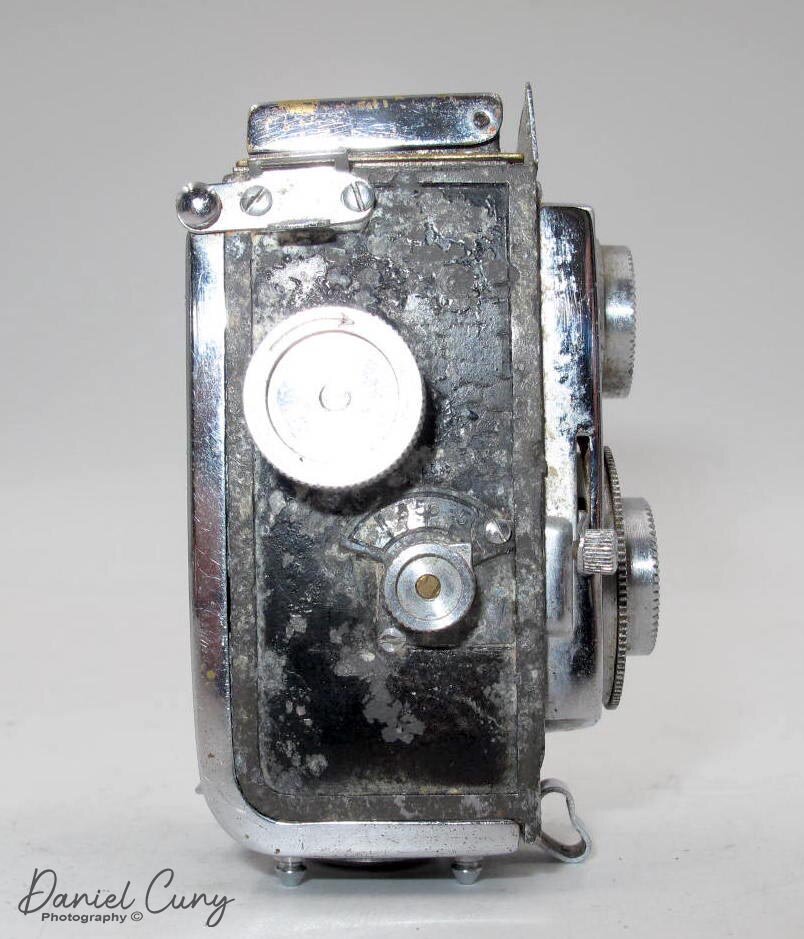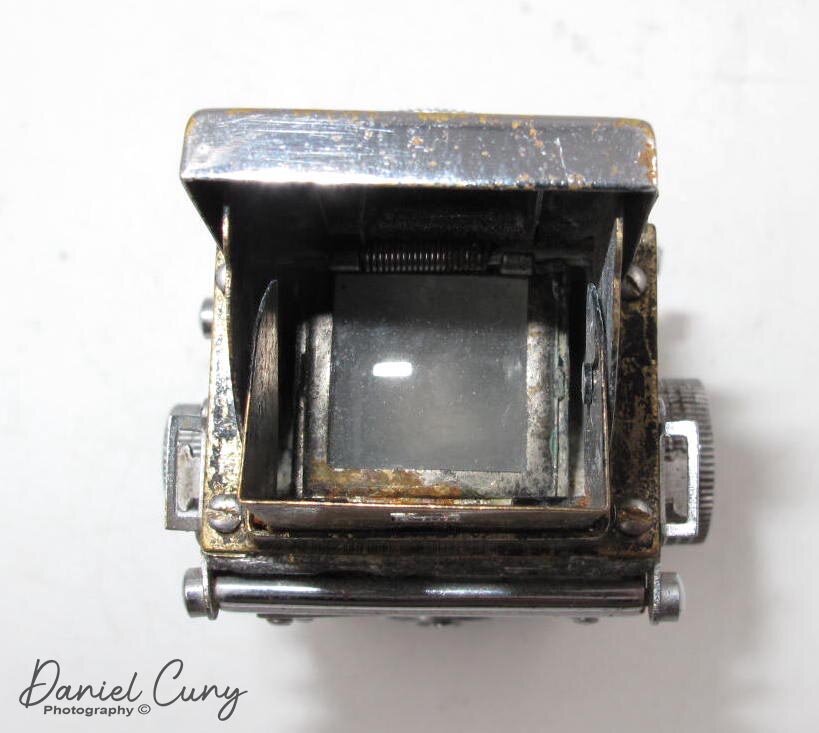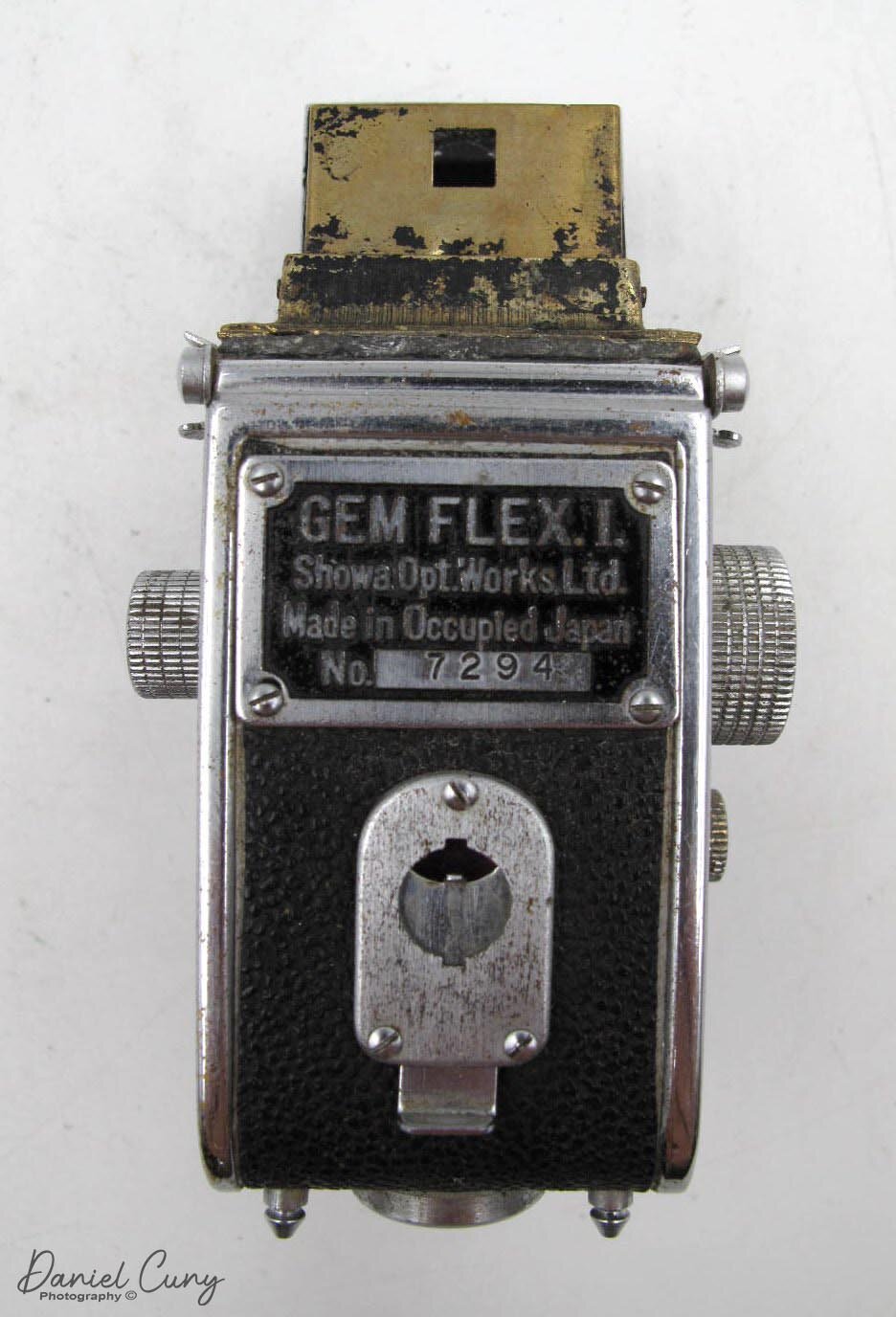GemFlex I Camera
Front view of camera with the finder up.
When I started collecting cameras many years ago, I never really liked the smaller cameras. Looking through my collection recently, I noticed I have quite a few smaller subminiature cameras, so I'm guessing they've come to grow on me. On many of the more intricate ones like the one I writing about this week, I enjoy these little wonders' quality and workability.
I picked this camera for my blog post this week because of this subminiature camera's oddity and uniqueness, The GemFlex camera. It resembles a twin-lens reflex style of camera as opposed to other subminiature cameras. This camera's workability is excellent from the standpoint that it has aperture and shutter speed settings as well as a pop-up finder for top-down viewing.
Size of the camera with finder down.
The GemFlex camera was manufactured in the 1950s by Shōwa Kōgaku Seiki in Nippon Toyko, Japan. Shōwa Kōgaku was started in 1938 by Nakagawa Kenzō, an engineer at Konishiroku, and obtained financing to create a new company. After WWII, the company changed the name of the company to Shōwa Kōgaku Seiki K.K. Their main claim to fame was a charming Leica copy named Leotax, which had several different models. Leotax line of Leica copies is still a very collectible camera today.
My version of GemFlex is a bit worn and a non-working version. This camera has higher quality than other "HIT" style cameras coming out of Japan during this timeframe. I purchased this camera in Honolulu, Hawaii, about ten years ago in a great antique store with several cameras. The owners are fun to talk with about antiques. Every time I go there, I make it a point to stop in and see what they have. If interested, the name of the shop is Antique Alley.
Let me tell you more about the camera itself. The camera is about 3" tall and 1.5" wide and deep. The top of the camera pops up like a regular TLR camera. If you slide the emblem on the top back, it even has a "speed" finder to use instead of looking down. On the top is the camera company logo, which is a stylized S and smaller K. Below the S.K. when opened, is the "GemFlex" name, which are chrome letters on a black field. There is a bump-out the portion of the camera where the two lenses are. The top viewing lens has GEM printed around it. The bottom lens is a 25mm f3.5 GEM lens. The lens is inside a Swallow shutter with shutter speeds of "B", 1/125, 1/150, 1/100, which are on a rotating collar. There is also a shutter cocking lever on the right as you face the camera. The shutter release is on the left of the shutter dial.
On the right side of the camera, there are two dials. The larger dial is the film advance knob, which has an arrow on the side with a clockwise direction to wind the film. Generally, on TLR cameras, this would be the focusing knob, but this camera is a fixed focus lens. The smaller dial is to set the aperture settings from f3.5-11. The aperture numbers on my camera are worn, I needed to get a magnifier to confirm.
On the left side of the camera is a button to release the top for viewing and another small knob to pull out to load the film. On both sides are places to put on a camera strap. On the bottom of the camera is the door release, which is more of a spring release, and a tripod socket. On the back of the camera is the camera nameplate with the company name and serial number. Also, "Made in Occupied Japan." The film counting window with a slide to open/close this window is on the rear too.
Like other TLR cameras, the GemFlex used a paperback roll film, 17.5mm, and took ten exposures per roll. Each frame was 14x14mm in size. Initially, when the camera was purchased new, it came with a leather case, lens hood, yellow filter, four rolls of film, and an instruction booklet. Initially, the camera had leather on the outside, but all of that is gone on my camera.
I hope you enjoyed reading a bit about this camera and would love to hear your comments. Next week's camera will be on the Minolta Autocord CDS. Until next week, please be safe.
You can subscribe to my Camera Collecting Blog below.


